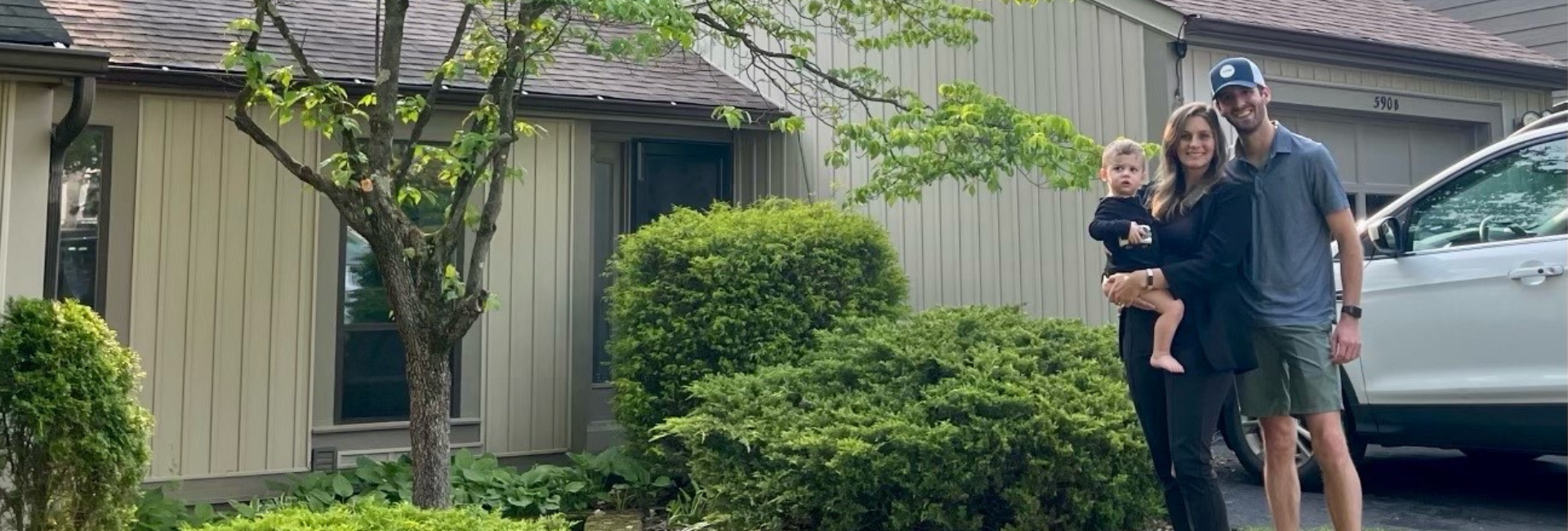Thin credit, lots of savings: How paying rent helped one couple get their dream home
July 31, 2023 | By Peter C. Beller
Friends and family have been flocking to Steve Murphy for financial advice for years, because he and his wife have an uncommon philosophy when it comes to money: Save as much as you can, so you almost never have to borrow money or put charges on a credit card.
That served the Pittsburgh couple well until 2022, when they decided it was time to buy their first home. Their local bank couldn’t offer them a mortgage, because they didn’t have a robust credit history. No borrowing means nothing to score.
“Everybody at the bank was just absolutely shocked,” Murphy says. “When you tell them you’re debt-free, no one wants to believe it. But this is how we chose to live.”
One banker suggested they take out a credit card, buy a pack of gum each week, and promptly pay it off in order to establish some kind of credit.
Instead they went to Churchill Mortgage, a lender based in Tennessee that offers conventional loans and many specialty loans, such as a “no credit score loan.” Instead of relying solely on a credit score, Churchill determines whether the borrower can afford to pay back a mortgage by assessing other kinds of data, such as rent payment history, verification of assets and income and positive cash flow. This real-time bank transaction data, often called alternative data, is shared by consumers with mortgage lenders through what is called “open banking,” and it allows prospective home buyers like the Murphys to demonstrate fiscal responsibility, such as always paying rent on time.
“Technology like this is just making it easier to obtain the data and the documentation that is needed for the mortgage transaction,” says Eddie Gonzalez, vice president of underwriting at Churchill.
Opening up mortgage underwriting to include digital verifications through open banking could dramatically impact a growing pool of potential home buyers and help close the homeownership gap.
An estimated 53 million U.S. adults don’t have the type of credit score most likely to be used in mortgage underwriting, which means they usually can’t get a loan to buy a house. There are many reasons someone could be financially responsible enough to own a home but not have enough credit history for a traditional credit score. Younger people, expats and those with lower incomes often have a harder time establishing credit for credit cards or traditional loans, a sort of chicken-and-egg problem that poses an obstacle to establishing credit.
The use of alternative data enabled by open banking holds promise for extending credit beyond just mortgages, whether in the form of auto and small business loans, credit cards or installment payments. “This complements the current ratings system and improves underwriting models in ways that make borrowing more inclusive while minimizing risk for lenders,” says Jess Turner, Mastercard’s executive vice president for global open banking and API.
Mortgage lending is one of the first uses in which alternative data is becoming an industry standard. The Federal Housing Finance Agency, which oversees government-sponsored enterprises like Fannie Mae and Freddie Mac that work with lenders to help borrowers obtain mortgages, has authorized them to use new and enhanced open banking data, such as rent history and positive cash flow.
Both Fannie Mae and Freddie Mac apply this data to their respective underwriting systems to help lenders expand credit access.
“With the rise of open banking, we’re able to leverage consumer-permissioned data to develop a more comprehensive view of how a borrower manages their money and financial commitments,” says Stacey Shifman, Fannie Mae’s vice president of Single-Family Consumer Credit Analytics. “In doing so, we can help create more homeownership opportunities for those with no credit history.”
“Our innovations level the playing field and help make homes more accessible to borrowers whose lenders might not have qualified them with traditional methods of underwriting,” says Kevin Kauffman, vice president in Freddie Mac’s Single-Family Client Engagement division. “This should particularly help first-time homebuyers and underserved communities.”
Open banking has the potential to do more than just enable homeownership — it also eases the process of buying a home. For one, because open banking relies on the exchange of data through digital connections, borrowers often do not need to retrieve paper copies of their records. This allows loan offers to be made faster and with less hassle.
“The more paperwork clients are asked for, the more anxiety they are just going to have,” says Churchill’s Gonzalez, who stresses that using digital records to document a loan doesn’t mean relaxing credit standards — it just makes things a little easier for borrowers.
“One of the most important parts for us as underwriters is to verify that the client has the resources and the funds needed to be able to close on the transaction,” Gonzalez says. Churchill uses Mastercard’s open banking platform, delivered by Finicity, a Mastercard company, to help piece together an applicant’s financial data quickly and painlessly.
“We are streamlining mortgage lending significantly, reducing costs and shortening the time needed for the overall loan origination process,” says Andy Sheehan, Mastercard’s executive vice president for open banking in North America. “With open banking, our ultimate goals are to help mitigate risk for lenders, improve the consumer experience for the borrower and ultimately increase financial inclusion by helping borrowers better prove their creditworthiness.”
When the Murphys went to Churchill, their loan officer had them provide permission to access their financial data to underwrite the mortgage. In October, the couple moved into their new home, a duplex with three bedrooms and one and a half baths — enough room for them, their two-year-old and the baby they’re expecting.
“I’m telling you,” Murphy says, “it’s perfect.”
Banner photo courtesy of Steve Murphy